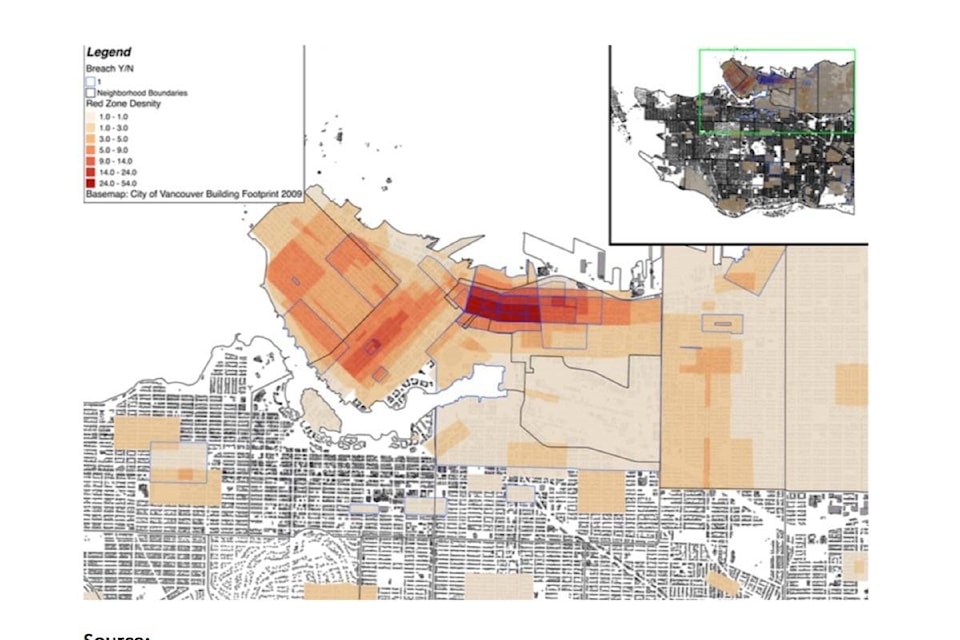Unreasonable “red zones” keep offenders trapped in a life of crime, a new joint study out of Simon Fraser University suggests.
In findings released Tuesday, researchers said geographic restrictions imposed as part of bail or sentencing conditions, known as “red zones,” are often nearly impossible for offenders to keep.
“Red zones have been an issue… for at least the past decade or so, but they’ve gone below the radar,” said SFU geography professor Nick Blomely, who wrote the study with teams at the University of Ottawa and the University of Montreal. “It’s something that’s very, very prevalent in a place like the Downtown Eastside.”
Red Zones in Metro Vancouver by Katya Slepian on Scribd
The SFU team talked to dozens of people in Metro Vancouver who had been assigned “red zones” during a bail or sentencing hearing and found in many cases, these zones included people’s homes and heavily restricted their access to social services.
One of the subjects, Paul, was arrested for drug possession in 2013. When he was released on bail the following day, his red zones encompassed both the supervised injection site InSite and Vancouver Area Network of Drug Users offices.
Paul spent the next several years in and out of jail, largely for breaching his red zones.
When Paul’s lawyer questioned why his red zones were in the same location as he lived, the judge replied: “I guess he’s going to have to move.”
Study also takes aim at bail conditions
Blomley questioned why someone like Paul was subject to bail conditions at all.
“In the case of bail, no one’s been found guilty of an offence,” Blomley said. “The presumption of innocence should apply.”
“The top two offences in 2014 in … Canada were failure to comply with the bail order and breach of probation,” he said. “There are more people in remand than in prison in B.C.”
While bail conditions may seem logical at first, Blomely said, they stray away from the actual legal reasoning behind bail in the first place. Bail, the study said, was meant to neither punish nor rehabilitate.
The study recommended a more judicious approach to red zones that doesn’t make abiding by them impossible and trap people into a revolving cycle within the justice system.
Like us on Facebook and follow us on Twitter.



